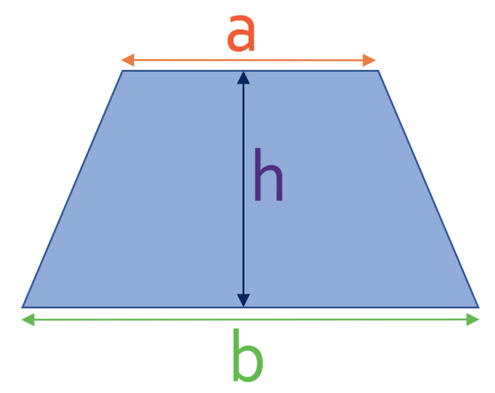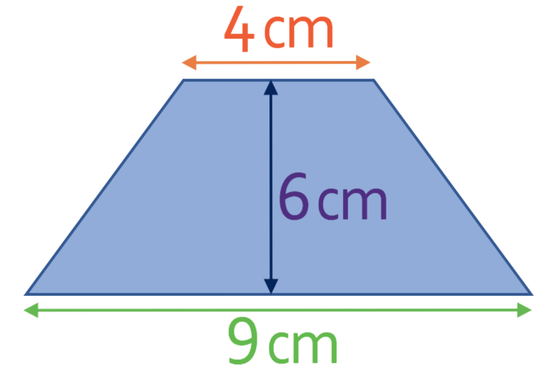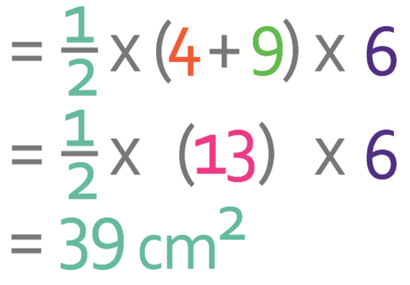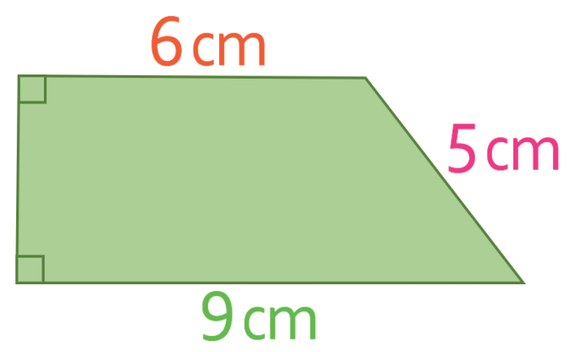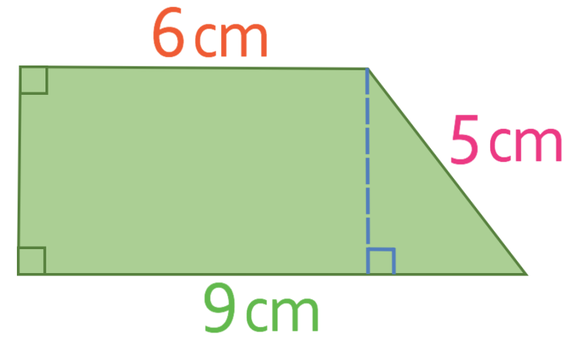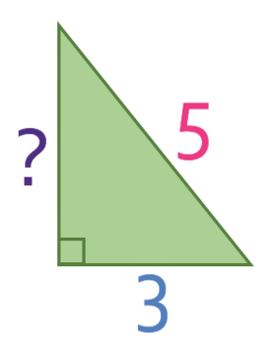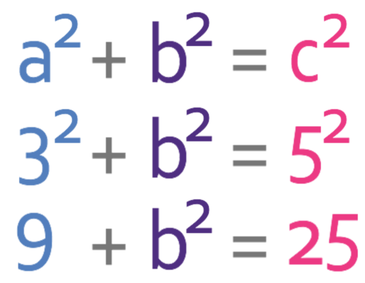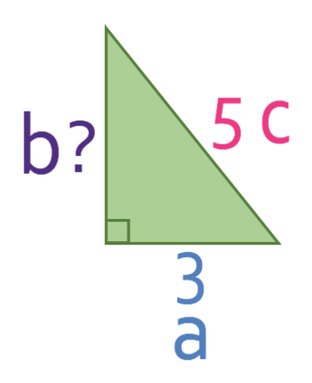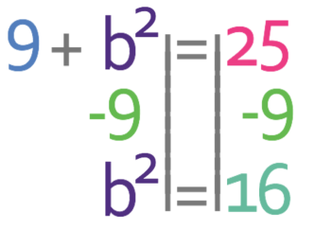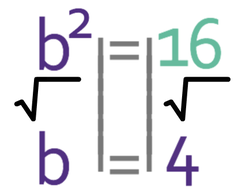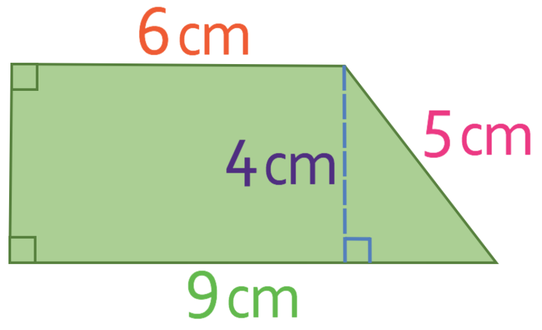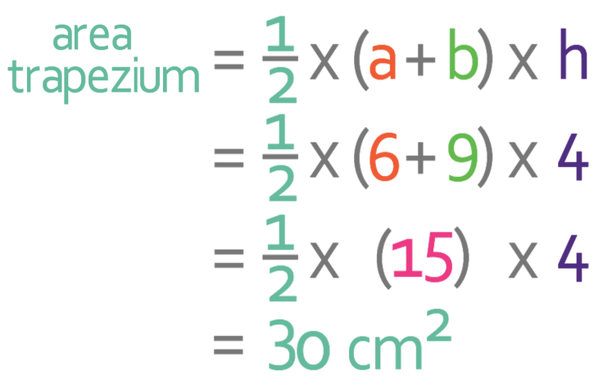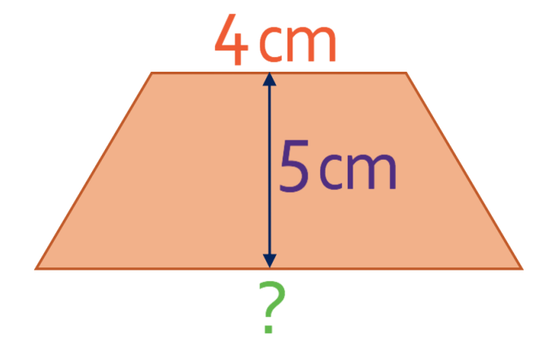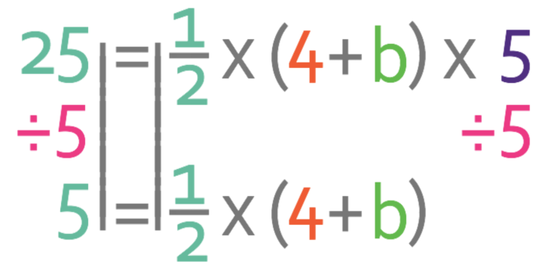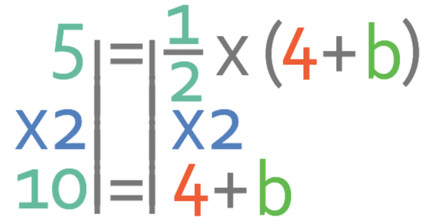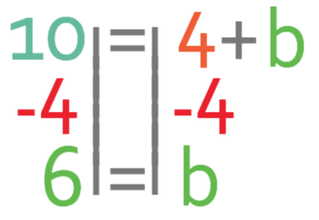4.5 M) Area of Trapeziums
- a and b are the two parallel sides
- h is the perpendicular height; the distance between the two parallel sides
This formula can also be written as:
What is the area of the following trapezium?
The area of the trapezium in the example is 39 cm2.
What is the area of the following trapezium?
We now have two sides in our right-angled triangle, which means that we can use Pythagoras’ theorem to work out the other side (which is the perpendicular height of the trapezium).
We want to find the value of b and not b2. Therefore, we square root both sides of the equation.
Therefore, the perpendicular height of the trapezium is 4 cm. Let’s add this to the diagram.
We are now able to calculate the area of the trapezium by subbing the values into the area of a trapezium formula.
The area of the trapezium in the question is 30 cm2.
The area of the trapezium below is 25 cm2. What is the length of the base of the trapezium?
We are asked to work out the length of the base of this trapezium. The area of a trapezium formula has 4 different values; the area, the perpendicular height and the length of the two parallel sides. We are given all of the values in the question, except 1 (the base), which means that we can use the area of a trapezium formula to obtain the length of the base. Let’s let the base of the triangle equal b in the area of the trapezium formula.
The next step is to sub all of the values that we are given in the question.
There are a few different methods that we can use to find the value of b. The way that I would find the value of b is to deal with the multiply by 5 on the right sides of the equation first. We can get rid of the multiply by 5 on the right side of the equation by doing the opposite; we divide both sides of the equation by 5.
The next step is to get rid of the fraction. We are able to get rid of fractions by multiplying both sides of the equation by the denominator of the fraction. The denominator of the fraction is 2, so we multiply both sides by 2.
We now need to move the 4 from the left to the right, which we do by taking 4 from both sides of the equation.
Therefore, the base of the trapezium is 6 cm. You could check your answer by subbing b as 6 back into the formula for working out the area of a trapezium to see if you do get an area of 25 cm2.

